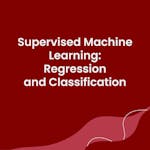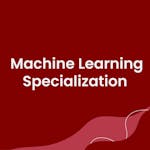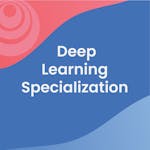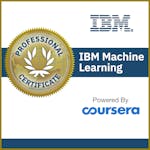Machine Learning Definitions: A to Z Glossary Terms
Interested in machine learning but you keep seeing terms unfamiliar to you? This A-to-Z glossary defines key machine learning terms you need to know.
Machine learning professionals are immersed in the development, implementation, and upkeep of machine learning models and algorithms. They leverage diverse programming languages, frameworks, and libraries to build applications capable of learning from data, make predictions, and identify patterns. With a focus on testing and collaboration, machine learning experts play a pivotal role in creating intelligent systems that drive innovation across various industries and domains.
This machine learning glossary can be helpful if you want to get familiar with basic terms and advance your understanding of machine learning.
Machine Learning Definitions: A to Z Glossary Terms
Interested in machine learning but you keep seeing terms unfamiliar to you? This A-to-Z glossary defines key machine learning terms you need to know.
Machine learning professionals are immersed in the development, implementation, and upkeep of machine learning models and algorithms. They leverage diverse programming languages, frameworks, and libraries to build applications capable of learning from data, make predictions, and identify patterns. With a focus on testing and collaboration, machine learning experts play a pivotal role in creating intelligent systems that drive innovation across various industries and domains.
This machine learning glossary can be helpful if you want to get familiar with basic terms and advance your understanding of machine learning.
Machine Learning Terms
Algorithm
An algorithm is a set of rules or instructions machine learning models use to process data and make predictions or decisions. It is a crucial machine learning component as it defines the learning process.
Bias
Bias in machine learning refers to the tendency of a model to consistently favor specific outcomes or predictions over others due to the data it was trained on. Reducing bias is essential to ensure fair and accurate predictions.
Cross-Validation
Cross-validation is a technique used to assess the performance of a machine learning model by dividing the data into subsets and evaluating the model on different combinations of training and testing sets.
Deep Learning
Deep learning is a machine learning subfield that uses artificial neural networks to model and solve complex problems. Deep learning models are capable of learning hierarchical representations from data.
Ensemble Learning
Ensemble learning is a technique where multiple machine learning models are combined to improve prediction accuracy and reduce overfitting. Popular ensemble methods include bagging and boosting.
Feature Engineering
Feature engineering is the process of selecting, transforming, and creating relevant features from raw data to improve the performance of machine learning models.
Gradient Descent
Gradient descent is an optimization algorithm used to update the parameters of machine learning models during training. It aims to minimize the error or loss function and improve model performance.
Hyperparameters
Hyperparameters are a machine learning model's settings or configurations before training. They control the learning process and significantly impact model performance.
Imbalanced Data
Imbalanced data refers to a data set where the distribution of classes is significantly skewed, leading to an unequal number of instances for each class. Handling imbalanced data is essential to prevent biased model predictions.
Joint Probability
Joint probability is the probability of two or more events occurring simultaneously. In machine learning, joint probability is often used in modeling and inference tasks.
k-Nearest Neighbors (k-NN)
k-Nearest Neighbors is a simple and widely used classification algorithm that assigns a new data point to the majority class among its k nearest neighbors in the feature space.
Loss Function
A loss function measures the difference between the predicted and actual values in machine learning. It serves as the optimization objective for training the model.
Model Selection
Model selection is choosing the best machine learning model from a set of candidate models based on their performance metrics and generalization ability.
Normalization
Normalization is scaling numerical features to a standard range to prevent one feature from dominating the learning process over others.
Overfitting
Overfitting occurs when a machine learning model performs well on the training data but poorly on new, unseen data. It happens when the model becomes too complex and memorizes noise in the training data.
Precision and Recall
Precision measures the proportion of true positive predictions out of all positive predictions made by a model, while recall measures the proportion of true positive predictions out of all actual positive instances.
Quantitative Data
Quantitative data refers to numerical data that can be measured and quantified. It is essential in machine learning for creating and training models.
Regression
Regression is a machine learning task that predicts continuous numerical values, such as house prices or temperature, based on input features.
Supervised Learning
Supervised learning is a type of machine learning where the model is trained on labeled data, meaning the input features are paired with corresponding target labels.
Transfer Learning
Transfer learning is a technique where a pre-trained model is used as a starting point for a new, related machine-learning task. It enables leveraging knowledge learned from one task to improve performance on another.
Unsupervised Learning
Unsupervised learning is a type of machine learning where the model is trained on unlabeled data and learns patterns and structures in the data without explicit target labels.
Validation Set
A validation set is a subset of the data used to evaluate the performance of a machine learning model during training and tune hyperparameters.
Weight
In machine learning, weights are the parameters of a model that are adjusted during training to minimize the error or loss function.
Conclusion
Congratulations on completing the A-to-Z glossary of Machine Learning terms! Understanding these key concepts will empower you to explore the fascinating world of machine learning and its applications. Whether you're starting your machine learning journey or seeking to deepen your knowledge, this glossary will serve as a valuable resource to enhance your proficiency and effectiveness in machine learning. Happy learning and experimenting!
Learn in-demand machine learning skills from industry leaders.
Data Analysis Courses | Artificial Intelligence Courses | SQL Courses | Web Development Courses | Statistics Courses | Programming Courses | JavaScript Courses | Data Visualization Courses | Computer Vision Courses | NLP Courses | R Courses | Deep Learning Courses
 Join a community of over 100 million learners from around the world
Join a community of over 100 million learners from around the world Learn from more than 200 leading universities and industry educators.
Learn from more than 200 leading universities and industry educators. 70% of all learners who have stated a career goal and completed a course report outcomes such as gaining confidence, improving work performance, or selecting a new career path.
70% of all learners who have stated a career goal and completed a course report outcomes such as gaining confidence, improving work performance, or selecting a new career path.- 100% online
- Flexible schedule
- Mobile learning
- Videos and readings from professors at world-renowned universities and industry leaders
- Practice quizzes
Can’t decide what is right for you?
Try the full learning experience for most courses free for 7 days.Register to learn with Coursera’s community of 87 million learners around the world




